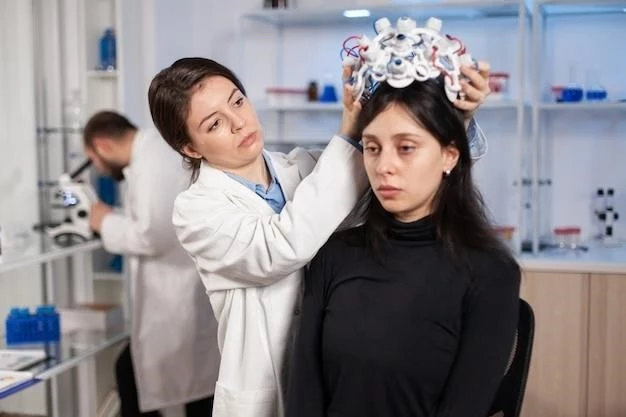Introduction to Pheochromocytoma as part of Neurofibromatosis
Pheochromocytoma is a rare tumor of the adrenal medulla composed of chromaffin cells. When it develops outside the adrenal gland, it is referred to as a paraganglioma. They release massive amounts of catecholamines causing common symptoms. NF-1 patients carry a risk of developing pheochromocytoma.
Understanding Pheochromocytoma and its Relation to NF-1
Pheochromocytoma is a rare tumor of the adrenal medulla composed of chromaffin cells, also known as pheochromocytes. It releases excessive catecholamines, leading to common symptoms like hypertension and headaches. Patients with neurofibromatosis type 1 (NF-1) have a heightened risk of developing pheochromocytoma. Understanding this relationship and the associated risks is crucial for early detection and management.
Causes and Risk Factors
Pheochromocytoma is a rare tumor originating from the adrenal medulla, releasing excessive catecholamines. Individuals with genetic syndromes like neurofibromatosis type 1 (NF-1) are at a heightened risk for developing pheochromocytoma. Understanding the connection between genetic conditions and this tumor is crucial for early detection and management.
Genetic Syndromes Associated with Pheochromocytoma
Pheochromocytoma is often associated with certain genetic syndromes like neurofibromatosis type 1 (NF-1)٫ multiple endocrine neoplasia type 2 (MEN 2)٫ and von Hippel-Lindau (VHL) syndrome. Individuals with these syndromes have an increased risk of developing pheochromocytoma. Understanding the genetic link is essential for early detection and personalized management strategies.
Symptoms and Diagnosis
Common symptoms of pheochromocytoma include hypertension, headache, sweating, and palpitations. Diagnosis involves biochemical tests to confirm hormonal excess followed by imaging studies like CT or MRI for localization. Understanding these symptoms and diagnostic procedures is crucial for timely identification and management of pheochromocytoma in patients, especially those with NF-1.
Recognizing Symptoms of Pheochromocytoma in NF-1 Patients
Patients with neurofibromatosis type 1 (NF-1) need to be vigilant about symptoms of pheochromocytoma such as hypertension, headache, sweating, and heart palpitations. Recognizing these signs early on can lead to prompt diagnosis and appropriate management of pheochromocytoma in individuals with NF-1.

Treatment and Management
Effective management of pheochromocytoma involves surgical removal as the mainstay of treatment. Additionally, medications to control blood pressure and hormone levels may be prescribed. Regular follow-ups and monitoring are essential to assess the tumor’s response to treatment and ensure long-term well-being. Collaborating with a multidisciplinary healthcare team is crucial for comprehensive care.
Approaches to Treating Pheochromocytoma within NF-1
Advancements in the treatment of pheochromocytoma within neurofibromatosis type 1 (NF-1) include a multidisciplinary approach involving surgical intervention for tumor removal along with pharmacological management to regulate blood pressure and hormone levels. Regular monitoring and follow-ups play a crucial role in ensuring effective treatment outcomes in individuals with NF-1 and pheochromocytoma.
Screening and Prevention
Regular screening is essential for pheochromocytoma in individuals with neurofibromatosis type 1 (NF-1) due to the increased risk associated with this genetic condition. Timely detection through screening tests can lead to early intervention, improving the prognosis and overall management of pheochromocytoma in NF-1 patients.
Importance of Regular Screening for Pheochromocytoma in NF-1 Patients
Regular screening for pheochromocytoma in individuals with neurofibromatosis type 1 (NF-1) is crucial due to the heightened risk associated with this genetic condition. Early detection through screening tests plays a significant role in facilitating timely interventions, thereby improving outcomes and enhancing the overall management of pheochromocytoma in NF-1 patients.
Incidence and Prognosis
Pheochromocytoma occurs in approximately 0.1-5.7% of patients with Neurofibromatosis type 1 (NF-1). The annual incidence is around 0.6 cases per 100٫000 person-years. While the prognosis varies٫ early detection through screenings is crucial for managing pheochromocytoma effectively in NF-1 patients.
Understanding the Frequency and Outlook for Pheochromocytoma in NF-1
The incidence of pheochromocytoma in patients with neurofibromatosis type 1 (NF-1) ranges from 0.1% to 5.7%. Early detection and management play a vital role in determining the prognosis for individuals with NF-1 and pheochromocytoma. Regular screening and timely interventions are key to improving outcomes in these patients.

Case Studies and Research
Investigations reveal the incidence of pheochromocytoma in patients with neurofibromatosis type 1 (NF-1) ranges from 0.1% to 5.7%. Understanding individual cases like a 37-year-old patient with symptoms can aid in early detection and effective management. Research highlights the importance of genetic syndromes and timely interventions in improving pheochromocytoma outcomes in NF-1 patients.
Analyzing Data and Studies on Pheochromocytoma as part of NF-1
Studies reveal that the incidence of pheochromocytoma in individuals with neurofibromatosis type 1 (NF-1) ranges from 0.1% to 5.7%. Analyzing data on individual cases and research studies is crucial for gaining insights into the management and prognosis of pheochromocytoma in NF-1 patients. Stay informed and proactive about the latest advancements in this field.
